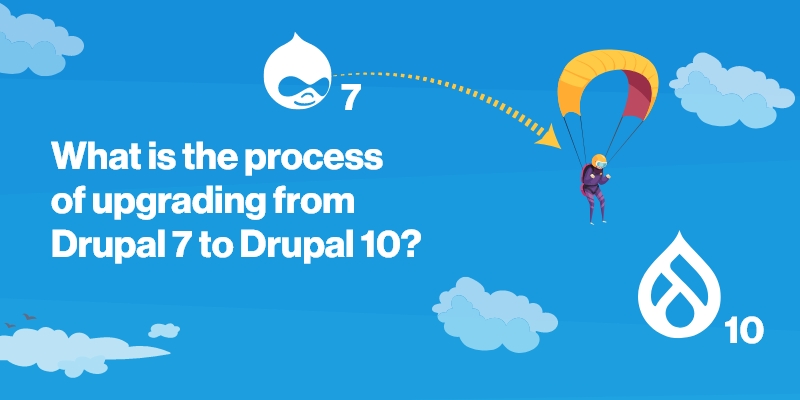
Introduction Drupal, one of the leading content management systems, has undergone significant updates over the years. If you're currently using Drupal 7, you might be considering the upgrade to the latest version, Drupal 10. Upgrading can bring a host of benefits, including enhanced security, improved performance, and access to new features. In this article, we'll provide a step-by-step guide to help you navigate the upgrade process from Drupal 7 to Drupal 10.
the Differences Between Drupal 7 and Drupal 10
Before diving into the upgrade, it’s important to grasp the key differences between Drupal 7 and Drupal 10. Built on the foundations of Drupal 8 and 9, Drupal 10 introduces significant changes:
- Architecture: Drupal 10 features a modern, flexible architecture that simplifies website development and maintenance.
- New Features: Expect improvements in front-end editing, media management, and accessibility.
- Backward Compatibility: Drupal 10 is designed with backward compatibility in mind, making future upgrades easier.
With this understanding, let’s explore the upgrade process.
1. Assess Your Current Drupal 7 Site
Begin by evaluating your existing Drupal 7 site. Take inventory of the modules, themes, custom code, and configurations in place. This assessment will help you identify which components need to be upgraded or replaced.
2. Plan Your Upgrade Path to Drupal 10
A well-thought-out upgrade plan is crucial for a smooth transition. Consider the following steps:
- Backup Your Site: Always create a complete backup of your Drupal 7 site before making changes. This will give you a re
ore point if anything goes wrong.
- Review Release Notes: Familiarize yourself with the release notes for Drupal 8 and 9 to understand the changes and requirements.
- Update Contributed Modules**: Check for updated versions of your contributed modules to ensure compatibility with Drupal 10. Identify alternative solutions if needed.
- Create a Timeline**: Develop a timeline for each step of the upgrade, including testing and deployment, while considering any dependencies that might affect your schedule.
3. Evaluate Your Current Modules
Assess the compatibility of your existing modules with Drupal 10. Some may have updated versions available, while others might require replacements or custom development. Determine the best course of action for each module.
4. Create a Drupal 10 Site with Contributed Modules
Once you’ve identified compatible modules, set up a new Drupal 10 site and install these modules using the latest versions available to leverage their new features and improvements.
5. Upgrade Your Custom Modules
If your Drupal 7 site includes custom modules, they will need upgrading for compatibility with Drupal 10. Review the API changes and update your codebase accordingly. Thoroughly test each custom module to identify and resolve any issues.
6. Migrate Your Data
Data migration is a critical step. Use tools like the Drupal Migrate module to facilitate the transfer of content, users, and configurations from Drupal 7 to Drupal 10. Carefully plan and execute this process to ensure data integrity.
7. Rebuild or Create a New Theme
Given the significant changes to theming in Drupal 10, you’ll need to either rebuild your existing theme or create a new one. Review the new theming system and incorporate responsive design principles to enhance user experience.
8. Test Your Site
Thorough testing is essential before launching your Drupal 10 site. Test all functionalities, including content creation, user registration, and custom features. Address any issues to ensure a seamless user experience.
9. Launch Your Drupal 10 Site
Once testing is complete and you’re satisfied with the results, it’s time to launch your Drupal 10 site. Follow your deployment plan to ensure a smooth transition from Drupal 7. Remember to update configurations like redirect rules or caching settings.
10. Train Your Team on the New Drupal 10 Site
After the launch, provide training for your team to familiarize them with the new features and functionalities of Drupal 10. Ensure everyone is comfortable navigating the updated interface and workflows.
Conclusion
Upgrading from Drupal 7 to Drupal 10 is a multi-step process that requires careful planning, assessment, and execution. By following these steps and dedicating time to thorough testing, you can successfully transition to Drupal 10, taking full advantage of its enhanced performance, security, and features.
If you have questions or need expert guidance on your Drupal migration, don’t hesitate to reach out to us at DrupalPartners. Our team of experienced professionals is here to support you every step of the way. Staying updated with the latest version of Drupal is crucial for your site's security, performance, and scalability.
